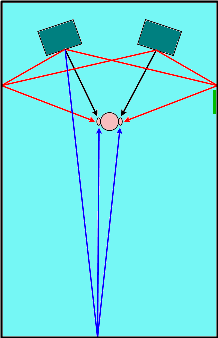With so much free information online, it's tempting to ditch traditional books. However, the quality of information in published texts is usually significantly better. One option you might like to consider is buying digital copies. Let's consider an example.
Sound Reproduction
Floyd Toole
This book is a must read!
If you don't at least have a copy, this should be a moment of embarrassment! If you buy it in an Australian book store, expect to pay around AU $70 and about $10 postage - $80 in total. You can buy it from the US for about $45 + shipping. There is a much more appealing option however. You can buy a digital copy for $36. In less time than it takes to walk out the door, you could be reading it right here.
Consider the benefits:
- cheaper
- no waiting for stock and for shipping
- no doggy ears
- no taking up space (I'd rather free it up than add more books)
Buy it at Amazon:
After digging around, this is the best price I have been able to find. As I am an Amazon "Associate" I do get a small commission on sales from links placed here. So if you are planning on buying it, you'd be doing me a favour clicking on the links here.
I will be adding a review of this book soon. You need to download Kindle from Amazon to view the digital version. You can also view a free sample.
Warning about Kindle version
The illustrations are very difficult to read in the Kindle for PC version. Here is an example:
Certain parts are illegible - see the small text. You can actually figure things out but it makes it difficult and tedious. A zoom function isn't provided and the illustrations just don't suit the Kindle application well. It would be fine with larger illustrations and text. This problem is an issue with this particular book, but the Master Handbook of Acoustics is fine. I have contacted Amazon about the issue and they may or may not make changes as a result. I'm sure I'm not the only one with this issue.
Another book that I'd call mandatory reading:
Master handbook of Acoustics
F. Alton Everest
This is an ideal text for anyone interested in room acoustics, whether novice or professional.
The Kindle edition is dirt cheap at only $17!
Buy it now from Amazon >
The illustrations are more clear and easier to read - no problem with Kindle for PC. The Kindle version is also dirt cheap, making it more appealing.
Other audio texts at Amazon:
Loudspeakers: For music recording and reproduction [Kindle Edition]
Philip Newell, Keith Holland
NASA - 3-D Sound for Virtual Reality and Multimedia
























